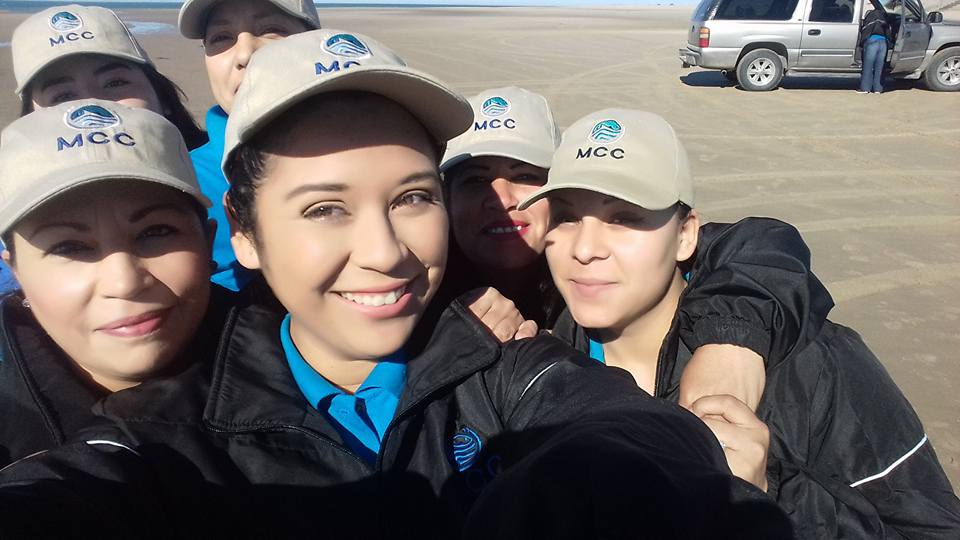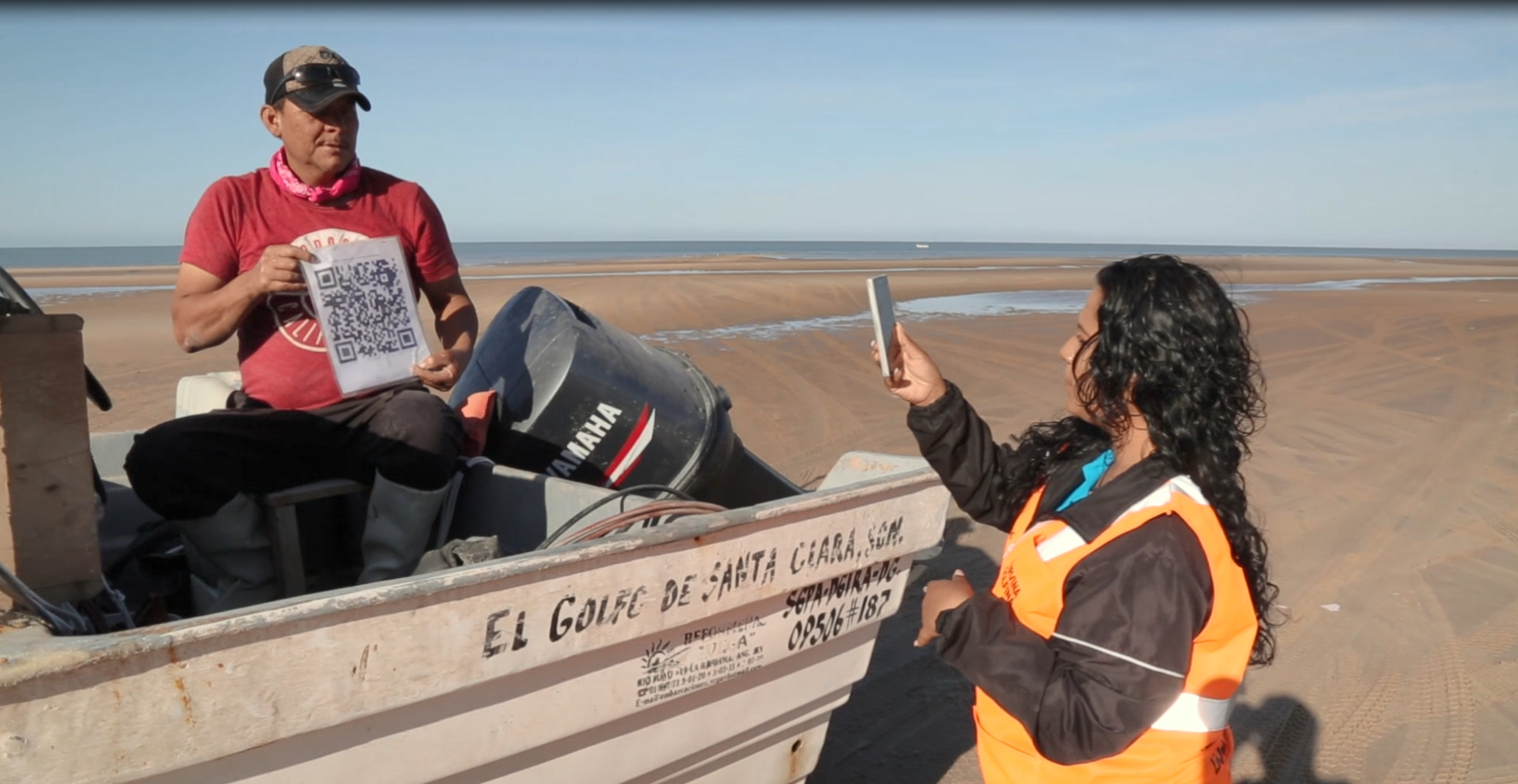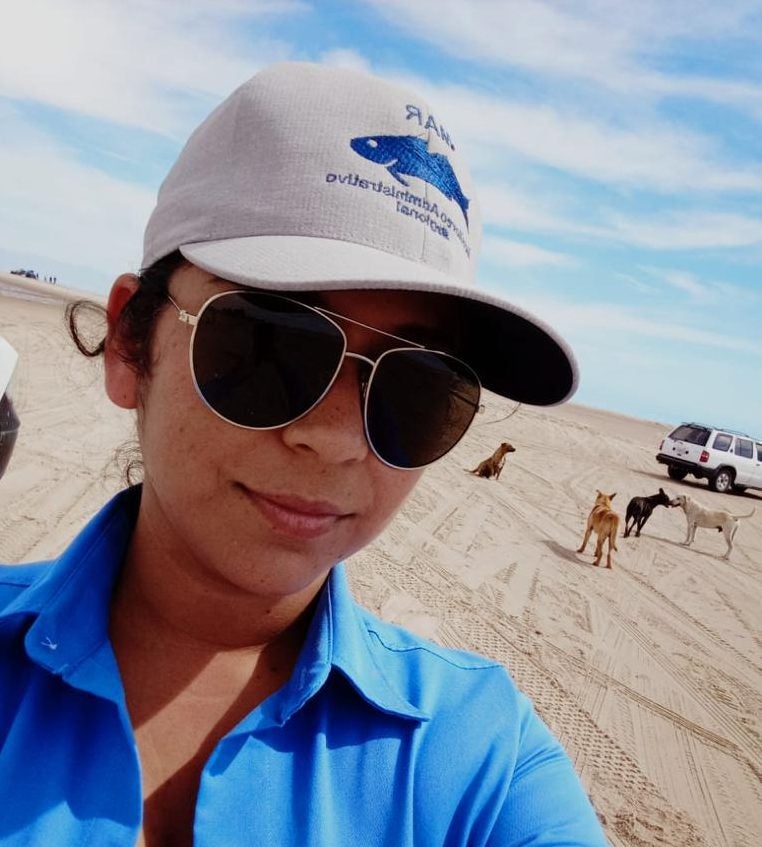By Alexia Juárez, catch monitor, Golfo de Santa Clara, Mexico
For me, the ocean means hope. As a child, one of the things I enjoyed most was going with my grandfather to seafood processing plants where I would watch many women working. I also cherish the image of going out to sea with my father and coming home with the panga (skiff) full of fish that we would later clean and sell as a family. In other words, the ocean has given us everything: wealth, belonging and spiritual strength. Today, I am a mother of two small children, and I feel the need to give back to the ocean so that my children can continue to live from it in a dignified way. I also want to teach them to love and respect the sea and all the life that lives within it.
For that reason, I joined the Community Catch Monitoring program in 2013, hoping to generate more information about our fisheries and resources so the ocean can continue to be our engine of life.
Fishing as the center of our community
In my community — Golfo de Santa Clara, Sonora — fishing is our main activity. We have a population of nearly 4,000 people, and most of us have some relationship with fishing. Here, 9 out of 10 people rely on fishing for a living, including those who go out to sea, those who clean and process fish for selling and those who work in the supply chain.
One fishery that definitely brings community together is the gulf curvina. The curvina fishery only occurs between the months of January and May, when it swims upstream to reproduce in the Colorado River Delta. The gulf curvina is one of the most regulated fisheries in Mexico due to its social and economic importance in the region and being within the Biosphere Reserve of the Colorado River Delta and Upper Gulf of California.
That is why in 2010, the fishery started designing a catch shares program to promote its sustainability and, therefore, support our community’s livelihood. Within this context, the Community Catch Monitoring program was created. Its objective was to gather catch information that could be useful for both fishers and fishing authorities.
It’s a program that is a valuable tool for defending sustainable fishing. Over 10 years ago, before catch shares, the curvina fishery was heading for overfishing and chaos. There was no control over who fished or how much they fished. Consequently, there was so much fish that markets would collapse and prices could fall by up to 60% in a single day; the race to fish would often end in tragedy, with boats sinking or accidents happening at sea in the urge to fish more and more.
Thus in 2012, the fishery began to work under a catch shares system. To have better control over catches — that is, who is fishing and how much they catch — the Community Catch Monitoring program was created with the support of the Mexican federal government, as well as Sonoran and Baja Californian state governments, fishing organizations, buyers and organizations such as EDF.
Monitoring as a tool for resilient communities
Today, the Community Catch Monitoring program is supported by fishers and the community. It has presence in both Sonora and Baja California states, giving employment to over 80 people — most of them women and youth. What we do is register information on the beach and on processing plants to have a better catch control system. On the beach, we rely on an app called WebControlPesca to register who goes out to sea, where they go and when they go, and if their permits and fishing gears are in order. When they return, we also register the time and location, as well as what they caught. For processing plants, we register the volume of catch delivered and its price.
This information is useful for fishers because it allows them to prove that they comply with the fishery’s regulations and quotas and so they can better plan when to fish, according to market conditions and the amount of quota they have available. Simultaneously, it helps the government better understand the fishery’s dynamics and make decisions considering both the state of the resources and community needs. The Community Catch Monitoring program is a way of working together: fishers and authorities, as well as men and women, for a sustainable fishery.
Women in fishing: teammates, not competitors
In fishing, women play a fundamental role — we are the right hand of men and, although they are usually the ones who go out to sea, women are always there too, side by side. Women also work in programs like mine, or prepare lunches and boats before men go out to sea, and are ready for when the skiffs come back, to clean, process and sell the curvina. Women’s work increases the value of this fishing activity. Men and women are a team and we can’t work without the other.
Expanding the Community Catch Monitoring program: hope for the Upper Gulf
Over the last decade, we have seen the benefits that the Community Catch Monitoring program has brought to the curvina fishery. Now we want to take it to a regional level. We want more fisheries in the Upper Gulf of California to have a management tool that allows them to improve their practices and operate with more order and responsibility. We want more women and young people to get involved in the management of their fisheries. We also want more communities to have accessible data to defend their livelihoods and so they can protect life in the ocean and fish sustainably.
We want more women and young people to get involved in the management of their fisheries.
For that reason, since 2019, a group of monitors from Baja California and Sonora, supported by EDF, have started a process to strengthen the Community Catch Monitoring program on a regional level. This is to become financially self-sufficient and resilient without having to depend on third parties to operate. We want to offer this tool and our services to other fisheries interested in approaching sustainable management. If the Community Catch Monitoring Program is strengthened, the fisheries and communities of the Upper Gulf will be strengthened too.
Finally, I want to invite you all to acknowledge your role and contribution toward sustainable fishing and continue to improve it — no matter if you are a man or woman, young or old, work in the fishing sector or the government, or in markets or as a consumer. If we recognize the importance of taking care of the ocean, and our ability to innovate and promote solutions for orderly and responsible fishing, we can ensure strong, prosperous and sustainable fisheries for years to come.
I have hope for my children’s future, and I am confident that by working together, we will achieve this.












